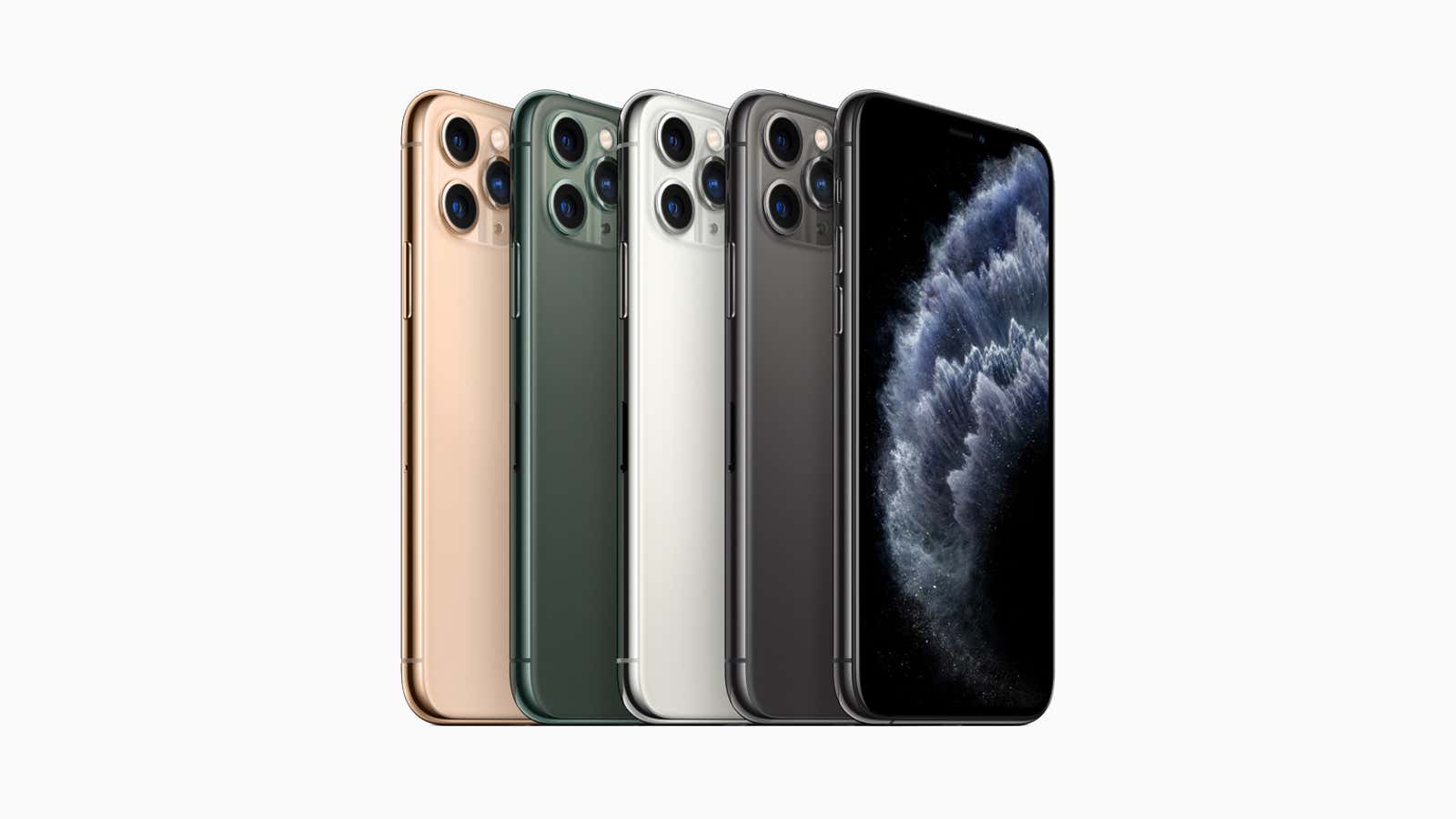At its annual September event held at its Cupertino, California headquarters, Apple showed off its latest gadgets and products in a fast-paced and energetic hourlong presentation.
Although there wasn’t perhaps as many new things as some Apple-watchers may have expected, Apple managed to unveil updates to many of its main product lines. Here’s a rundown of everything the company showed off.
iPhone 11
This looks a little bit… familiar?
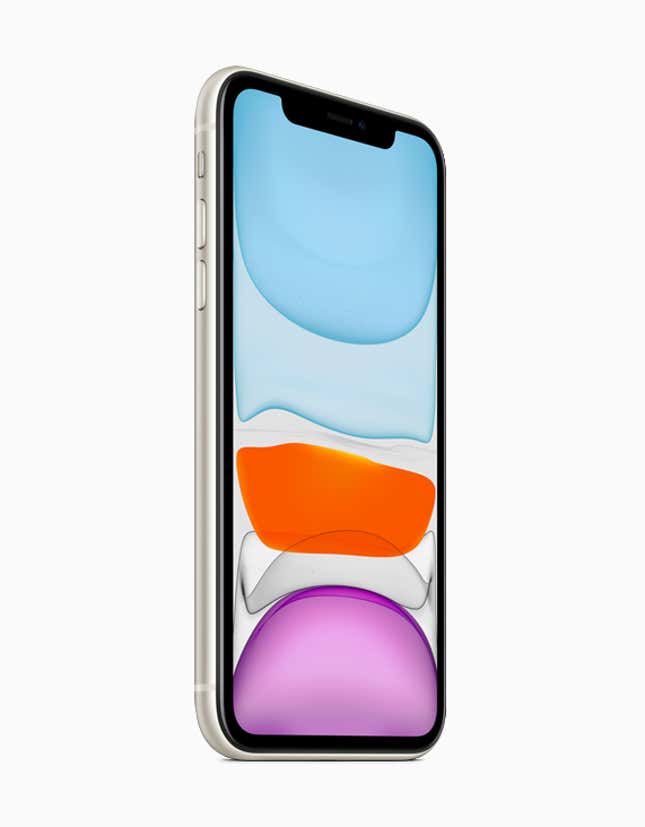
Apple’s latest iPhone looks a lot like last year’s iPhone Xs, which looks a lot 2017’s iPhone X. But this seems to be the way of Apple now: the basic design of 2014’s iPhone 6 carried on to the iPhone 7, and the iPhone 8 as well. So perhaps next year we’ll see a new design for the iPhone.
There are a few changes to Apple’s flagship phone this year, which is replacing last year’s iPhone Xr. The device features a 6.1-inch Retina HD display, and will come in green, red, purple, white, yellow, and black at launch. It still features two cameras on the back (but for some reason the camera bump now takes up far more space), which can take ultra-wide-angle photos.
The phone will also feature a new “night mode,” allowing it to take far more detailed photos in low light, much like Google’s Pixel and Samsung’s Note 10 line of phones have introduced. The cameras will able to shoot in 4K at 60 frames per second, with some pretty impressive-looking motion reduction. The front-facing selfie camera will also be able to take wide-angle shots, and the ability to take 4K and slow-motion video. Apple is calling those… “slofies.”
The new device features Apple’s latest A13 Bionic processor, which it claims is the “fastest-ever” processor in the smartphone. Apple showed off an impressive demo of a detailed videogame, Pascal’s Wager, running at 60 frames per second. While that might be useful for some gamers out there, most consumers will likely be more concerned about how that processor helps with battery life. As ever, Apple was rather cagey on just how long the iPhone 11’s battery would last, just saying that it would last about one hour longer than the iPhone Xr’s did.
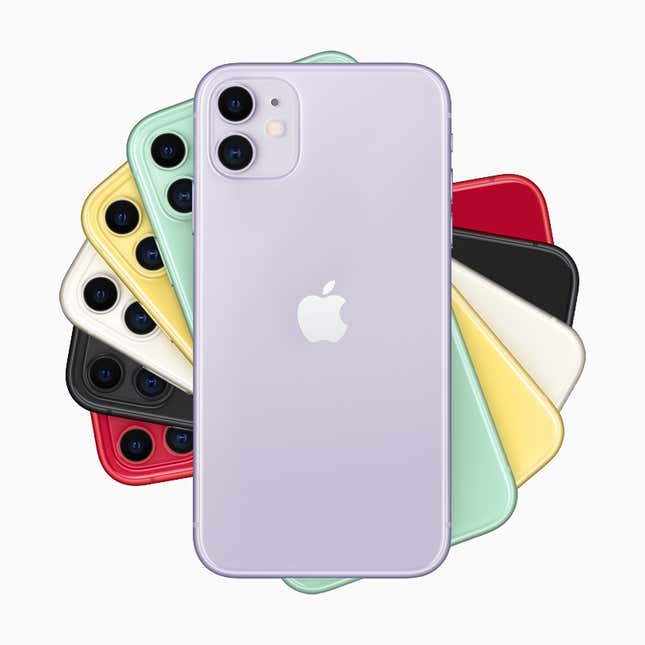
The iPhone 11 will start at $699 and will be available for pre-order on Sept. 13, and in stores Sept. 20. That’s $50 less than the iPhone Xr started at last year, suggesting that Apple has finally found the top of the price range that the average consumer is willing to pay for a new iPhone.
iPhone 11 Pro
Joining its MacBooks and iPads, Apple unveiled what it called the first phone worthy of being called “Pro.” It comes in two sizes, with a 5.8-inch display and a 6.5-inch model that it’s calling the iPhone 11 Pro Max, which really rolls off the tongue.
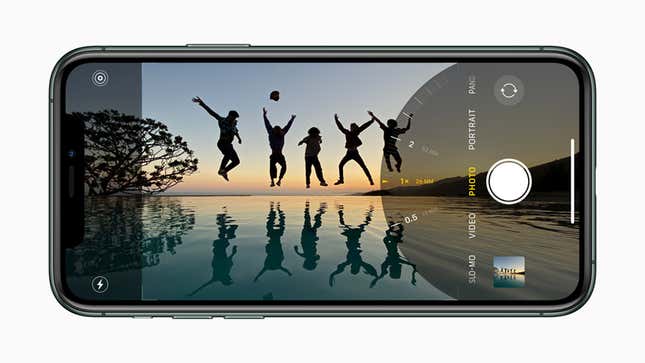
Apple talked at length about the capabilities of its new processors in the Pro phones, which it says are its most efficient and highest-performing to date, that apparently result in “great battery life for customers.” Apple said the 11 Pro would have 4 hours more battery life than the iPhone Xs, and the Pro Max would have 5 hours more battery life.
The new phone features three cameras, arranged in a triangle shape, on the rear of the device. These will allow the phones to—like many high-end Android phones already on the market—take photos with three levels of zoom. Apple said this would allow users to take “pro photography” with a smartphone. There will also be a new mode coming soon called “Deep Fusion,” using the phone’s built-in AI processor to stitch together nine simultaneously shot images to capture ideal images. All three cameras can also shoot 4K high-speed video.

Other small updates were mentioned in passing, including FaceID now working at wider angles, and the phone will feature Wifi 6, the newest, fastest wireless internet standard.
The phones will come with an 18-watt fast-charging cable in the box. Both models will come in dark green, grey, silver, and gold at launch.
The iPhone 11 Pro will start at $999, and Pro Max will start at $1,099. The phones will be available for pre-order on Friday (Sept. 13) from 5am US Pacific time, and available in stores from Sept. 20.
Apple Watch Series 5
Apple unveiled its follow-up to the very good Apple Watch 4. The new model, while aesthetically very similar to last year’s model, features some important upgrades under the hood.
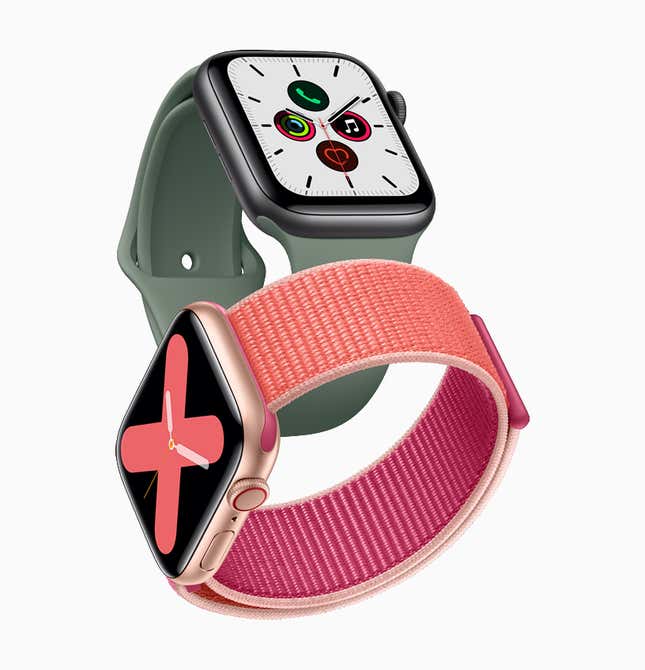
The new watch will be the first Apple Watch to feature an always-on display, meaning it’ll be far easier to use it to actually tell time. The watch face will dim when you’re not looking at it directly, and brighten up when you turn your wrist. It’ll be a lot simpler to check the time, notifications, and track workouts, without having to make awkward arm gestures anymore.
There will be other minor updates to the watch, including a new built-in compass, which’ll be able to tell your your latitude and longitude wherever you are, as well as your altitude. The new LTE cellular version of the watch will also have international emergency calling, in case you fall while on vacation. The fifth-generation watch will also come in ceramic and titanium models.
The new model will start at $399 (and $499 for the LTE version), and will be available to order from today. The titanium model will start at $799, and the ceramic version at $1,299.
Beyond the watch itself, Apple announced that it will also be releasing a new app, called the Apple Research app, which will be its new home for clinical health research, that anyone with an Apple Watch can sign up to be a part of. It also announced three new health research initiatives, around hearing, menstrual health, and movement. Apple said the new app will be launching later this year.
The 10.2-inch iPad
After unveiling new iPad Air and Mini models in March, Apple turned its attention to the standard iPad at today’s event. The redesigned iPad features a larger 10.2-inch display (compared with the old 9.7-inch one found on older models), a new keyboard cover that mimics the design of the iPad Pro’s, and the ability the use the (original version) of the Apple Pencil.
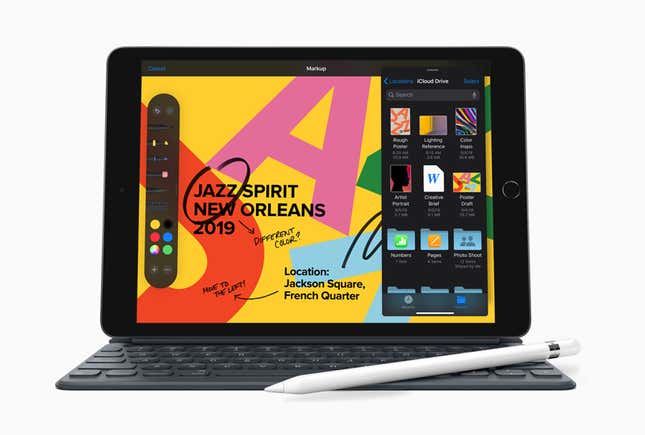
The iPad runs the new iPadOS operating system, a modified version of iOS that’s meant to make the device feel more like a complete computer, unveiled at Apple’s summer developer event.
The tablet will start at $329, and is available online from today. The Pencil costs $99, and the keyboard cover will run you $159.
Updates on Apple TV+ and Apple Arcade
We finally got some more information on Apple’s original-TV and gaming subscription services, which were first unveiled in March.
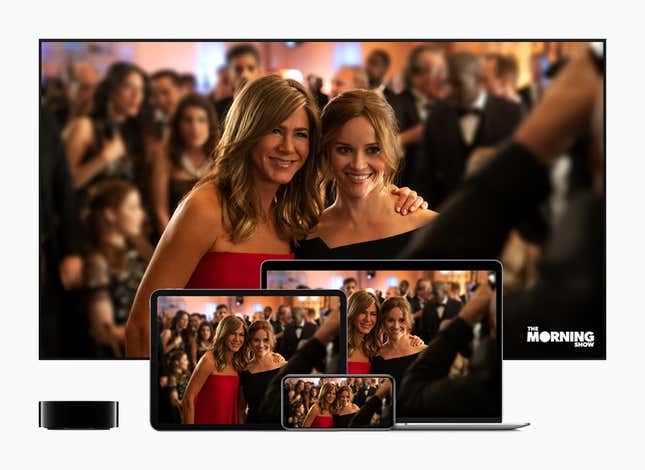
Apple TV+, which has seen trailers for its shows trickle out over the last few weeks, got a few more previews at today’s event, including See, Jason Momoa’s show set in a future where only his children can see and that seems to annoy everyone.
The new service will launch on Nov. 1, and be available on iOS devices, macOS devices, and Apple TV. It will cost only $4.99 per for a monthly subscription. CEO Tim Cook also told the audience that anyone who buys a new iPhone, Mac, or iPad will also receive a free year of the streaming service.

Apple Arcade, which recently got support for popular third-party video game controllers from Sony and Xbox, will launch on Sept. 19. It’ll have a mix of over 100 games developed just for Apple from indie and larger developers that will work on Apple’s various devices. Apple partner showed off a few new games onstage, including an updated version of the arcade classic, Frogger, as well as a new underwater platform game from Capcom, and a racing-cum-fighting game called Sayonara Wild Hearts from Annapurna. A monthly subscription will also run you $4.99 per month, and there will be a one-month free trial at launch.
That’s about it!
There were a spate of rumors ahead of today’s event that didn’t materialize into new products. There had been talk of a new pair of AirPods, an updated iPad Pro, some sort of tracking device, and a new MacBook Pro, but none of these came to light at the event.
It’s entirely possible, however, that Apple will hold another event later in the year to unveil these and other products. Last year, it held an event in October to unveil new MacBooks and iPad Pros. So if you’re in the market for one of these—stay tuned.
